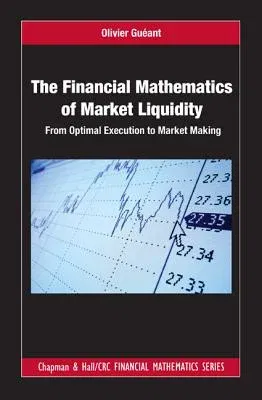This book is among the first to present the mathematical models most
commonly used to solve optimal execution problems and market making
problems in finance. The Financial Mathematics of Market Liquidity:
From Optimal Execution to Market Making presents a general modeling
framework for optimal execution problems-inspired from the
Almgren-Chriss approach-and then demonstrates the use of that framework
across a wide range of areas.
The book introduces the classical tools of optimal execution and market
making, along with their practical use. It also demonstrates how the
tools used in the optimal execution literature can be used to solve
classical and new issues where accounting for liquidity is important. In
particular, it presents cutting-edge research on the pricing of block
trades, the pricing and hedging of options when liquidity matters, and
the management of complex share buy-back contracts.
What sets this book apart from others is that it focuses on specific
topics that are rarely, or only briefly, tackled in books dealing with
market microstructure. It goes far beyond existing books in terms of
mathematical modeling-bridging the gap between optimal execution and
other fields of Quantitative Finance.
The book includes two appendices dedicated to the mathematical notions
used throughout the book. Appendix A recalls classical concepts of
mathematical economics. Appendix B recalls classical tools of convex
analysis and optimization, along with central ideas and results of the
calculus of variations.
This self-contained book is accessible to anyone with a minimal
background in mathematical analysis, dynamic optimization, and
stochastic calculus. Covering post-electronification financial markets
and liquidity issues for pricing, this book is an ideal resource to help
investment banks and asset managers optimize trading strategies and
improve overall risk management.

